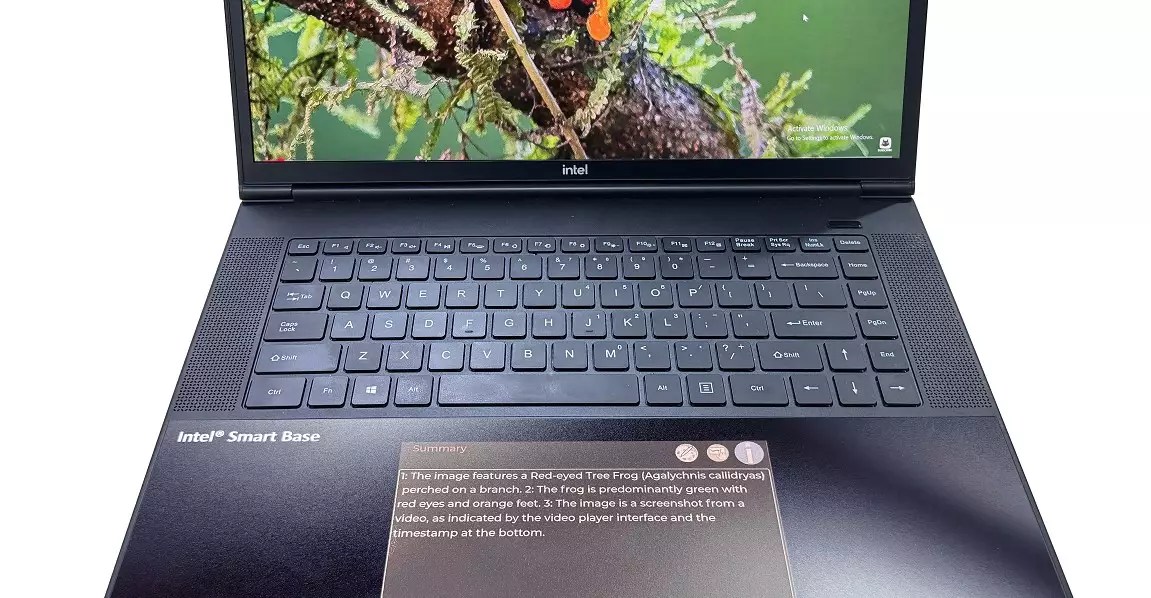The tech industry has long been obsessed with pushing the boundaries of what laptops can do, but often these innovations revolve around larger screens or faster processors. Now, a shift is emerging that redefines how we interact with portable computers — integrating advanced E Ink technology into the very touchpad beneath our fingertips. This move is not just a superficial upgrade; it promises to fundamentally alter user interaction, prolong battery life, and introduce an entirely new dimension of multitasking on laptops. The concept positions the touchpad as an independent display, dedicated not to replacing or supplementing the main screen but serving as a customizable, low-power workspace for AI-driven tasks and notifications.
This approach signals a bold departure from traditional touch-sensitive surfaces. Instead of being merely a place for cursor control, the new E Ink-powered touchpad could enable users to maintain dynamic content, such as live AI summaries or ongoing conversations, without cluttering the main display. Such functionality removes the need to juggle multiple windows, thereby streamlining workflows in a way that feels natural. It’s an acknowledgment that the future of laptops isn’t solely about larger or more powerful screens but smarter, more energy-efficient peripheral displays that enhance usability.
Advantages Rooted in Power Efficiency and Practicality
One of the standout benefits of this innovation lies in its power consumption profile. Unlike traditional LCD or OLED panels, E Ink displays only draw energy when rendering new content. This characteristic is a game-changer for laptops, where battery life is a persistent concern. Integrating a color E Ink touchpad designed for AI interactions could significantly reduce power drain, enabling longer work sessions, especially when engaging with resource-intensive AI applications.
Moreover, the versatility of E Ink’s technology extends beyond energy savings. Its contextual applications could include quick access shortcuts, notifications, or even real-time weather updates — all accessible at a glance and without interrupting the primary workflow. This would be akin to having a customizable digital assistant permanently within reach, yet unobtrusive and always on standby. The concept echoes the discontinued Apple Touch Bar but with the potential for a richer, more adaptable display that aligns with the laptop’s core purpose: productivity and efficiency.
However, skepticism remains about whether such a low-power display can offer the resolution, color fidelity, and responsiveness necessary for seamless user experiences. While E Ink has made strides with color e-paper displays used in signage and specialized devices, its application on a touch-based, interactive surface introduces technical challenges such as refresh rates and color vibrancy. Overcoming these hurdles will determine with certainty whether this vision becomes a practical reality or remains a niche concept.
Is E Ink’s Vision Truly Ready for Prime Time?
What remains elusive in the current announcements are clear technical specifications and implementation timelines. Will this E Ink touchpad be based on existing panels, or will it require custom developments with higher resolutions and faster refresh capabilities? These factors are crucial in assessing whether the technology can meet the demanding expectations of professional users, gamers, or casual consumers alike.
Furthermore, integration with operating systems and hardware ecosystems is a significant hurdle. Will these touchpads operate as independent displays with their own interfaces, or will they be tightly coupled with the laptop’s main OS? The lack of clarity raises questions about software support, compatibility, and whether hardware manufacturers are prepared to embrace this radical shift.
One aspect that might tip the scales in favor of widespread adoption is the measurable benefit of power savings combined with increased productivity. If manufacturers can deliver a seamless experience that convincingly demonstrates the utility of such a dedicated AI workspace without sacrificing performance or display quality, it could usher in a new era of intelligent, energy-conscious laptops. Until then, this idea remains a tantalizing glimpse into what could be a transformative evolution in personal computing, challenging our assumptions about screen size, power consumption, and user interaction.


Leave a Reply